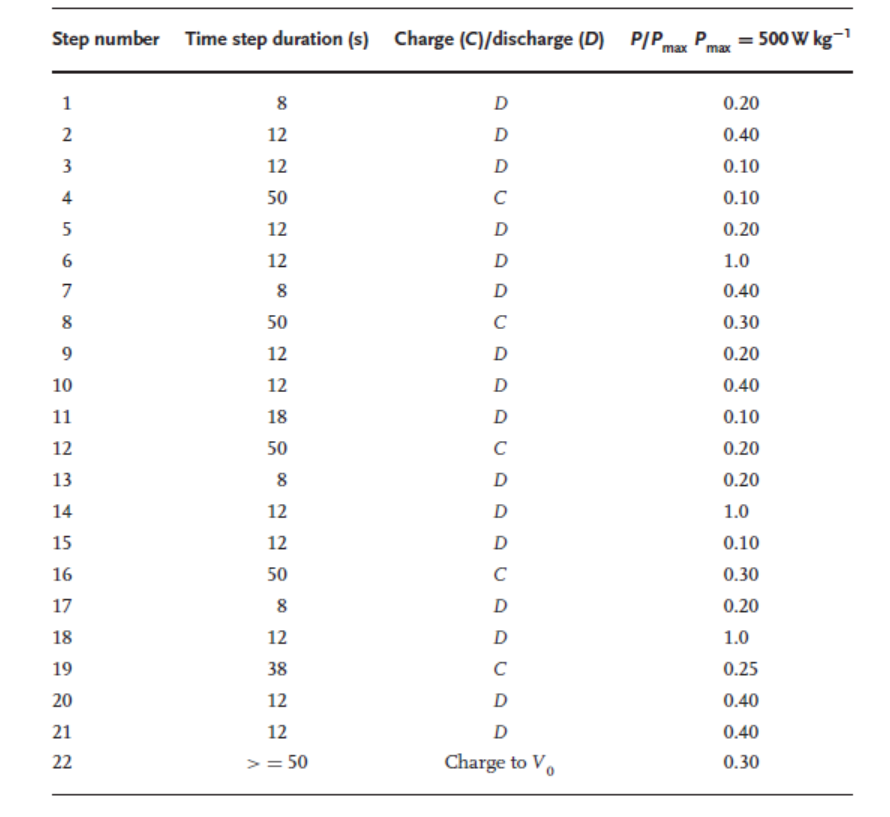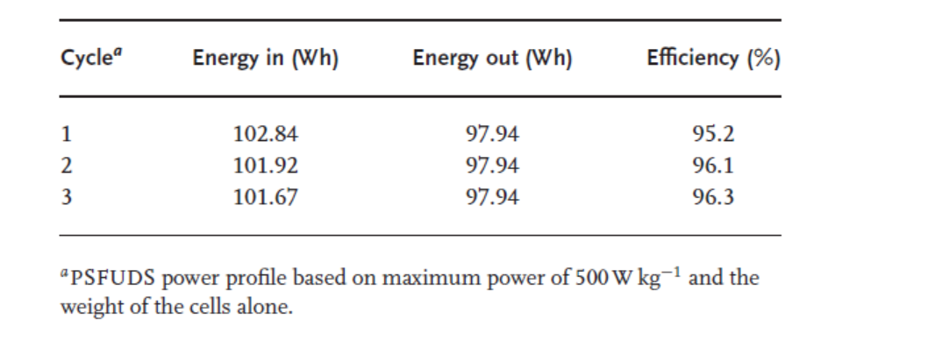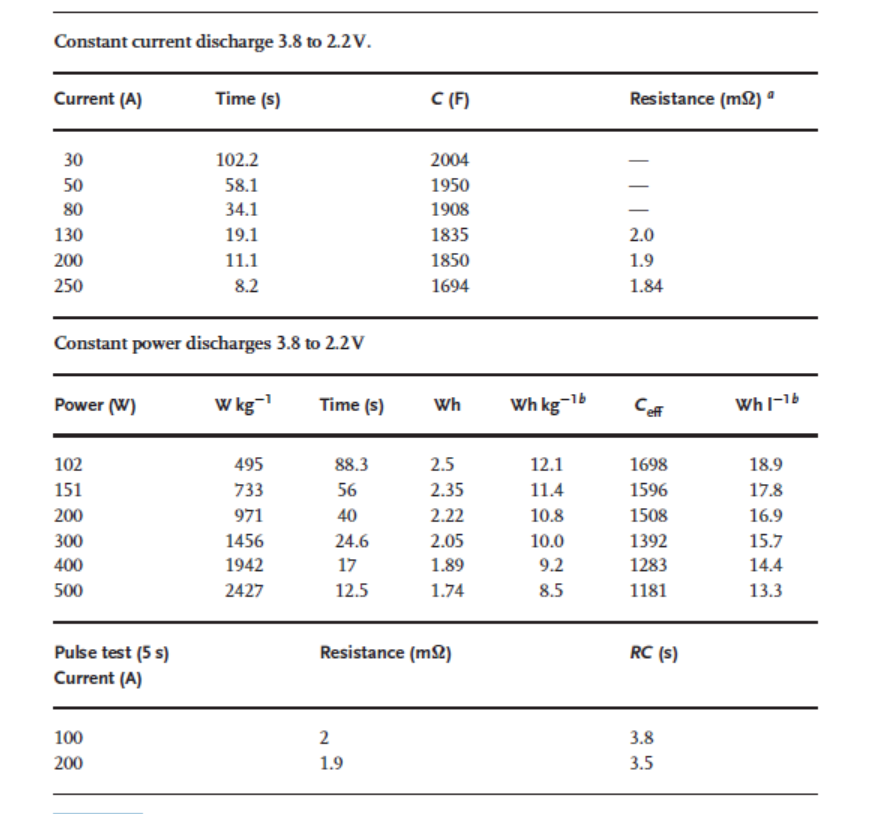In simplest form, the energy stored in a hybrid capacitor can be expressed as

assuming that capacitance Ceff is a constant.
In the case of the carbon/carbon devices, Vmin= 1/2 Vrated.
In the case of the hybrid capacitor, Vmin is the minimum voltage at which the device stores significant charge.
Ceff has been calculated from the test data for a carbon/carbon device in Tables 1 and 2 and for a hybrid capacitor in Table 3.
It is clear from the comparison of the tables that the Ceff approximation and the simple 1/2CV2 relationship is valid to obtain the energy stored at low-power densities for the carbon/carbon devices, but not for the hybrid devices. Hence, the energy density of hybrid capacitors should be obtained from testing them over a range of power densities. The simple 1/2CV2 relationship overestimates the energy stored in the hybrid capacitors. As is the case for carbon/carbon devices(e.g. supercapacitor), energy density decreases with increasing power density owing to the effect of resistance on the operating voltage range of the device.
The only reliable way to determine the energy stored and the energy density of an electrochemical capacitor(e.g. supercapacitor) is to test it over a range of power densities. This is especially true of hybrid capacitors. These measurements should be done over the usable operating voltage range of the device. The energy stored and discharged and the resultant energy density will decrease as the discharge rate (W kg−1) increases. When energy and energy density values are reported, they should be usable values and indicate the discharge rate (W kg−1) at which they were measured. Utilizing the 1/2 CV2 relationship to calculate the energy density can overestimate the usable energy density by at least 1/3 for carbon/carbon devices and even greater for hybrid devices.

Table 1: Time power steps for the PSFUDS test cycle

Table 2:Round-trip efficiencies for the commercial 45V Module on the PSFUDS cycle

a Resistance is steady-state value from linear V versus time discharge curve.
b Based on the weight and volume of the active cell materials.
Cell weight 206 g, 132 cm3.
Ceff= 2(W s)/(3.82 to 2.22).
Peak pulse power at 95% efficiency R = 1.9mΩ.
P = 9/16 × 0.05 × (3.8)2/0.0019 = 214 W, 1038Wkg−1.
—– Quote from:《Supercapacitors: Material, System, and Applications》
Energetic Performance and Discharging at Constant Power
About SPS
Supreme Power Solutions Co., Ltd. (SPS) is a leading manufacturer of ultracapacitors, as well as a provider of ultracapacitor energy storage systems and technological solutions. Our products have wide industry applications, such as new energy vehicles, wind turbines pitching control systems, trams and subways, smart grid, micro grid, heavy duty machineries, intelligent instrument, etc. We support more than 200 customers, and our products are exported to 26 countries and territories.
More information: https://www.spscap.com

